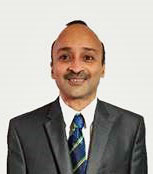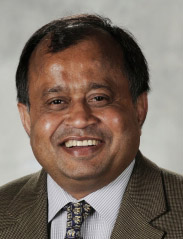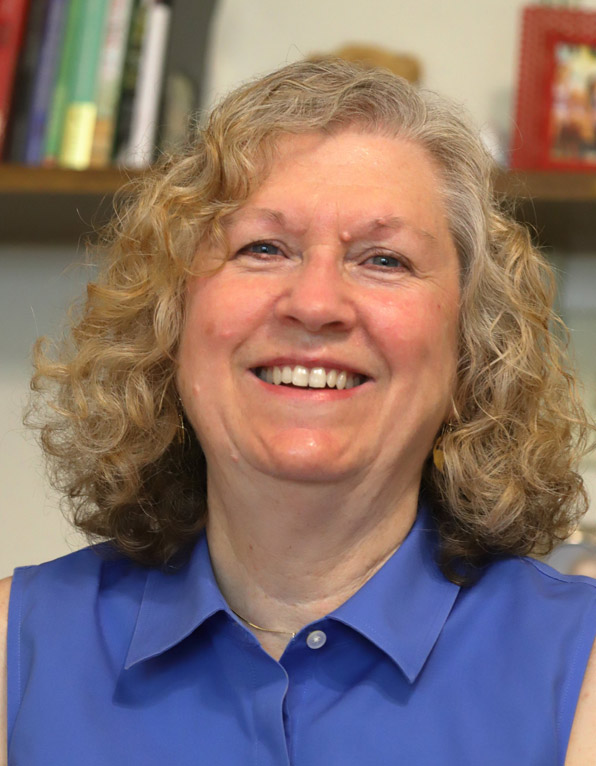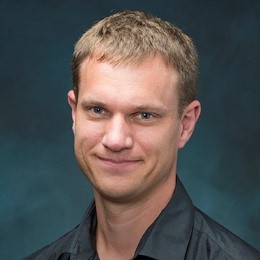2-Hour Short Course: Reliability Physics and Failure Mechanisms in Electronics Packaging 🗓
2-Hour Short Course: Reliability Physics and Failure Mechanisms in Electronics Packaging
Speaker: Xuejun Fan, Regents’ Professor, Department of Mechanical Engineering, Lamar University  Meeting Date: Wednesday, November 2, 2022
Meeting Date: Wednesday, November 2, 2022
Time: Checkin via WebEx at 7:45 AM; Presentation 8:00 – 10:00 AM (PDT)
Cost: none
Reservations: eps2211a.eventbrite.com
Summary: This course presents an overview of the physics of failures in electronics packaging. The course discusses key fundamental concepts of reliability physics associated with various stress conditions, including thermal degradation, thermo-mechanical stress, dynamic and vibrational loading, moisture and humidity, as well as electrical current stress. Failure mechanisms studied include chip-package interactions, micro-bump reliability, electromigration performance, inter-layer dielectric (ILD) damage under bumps and Cu pillars, solder joint reliability, drop and vibrational damage, interfacial delamination, and the impact of moisture and environmental humidity. Acceleration factor models for different failure mechanisms are introduced. Stress analysis methods using finite element analysis (FEA) with specific applications to packaging are described.
Course Outline:
Introduction to advanced package reliability physics
Thermal and thermo-mechanical driven failure mechanisms
Dynamic and vibrational-driven damages
Moisture and humidity-induced failures
Electromigration
Summary
For further presentations on reliability for electronics and photonics packaging, please attend REPP, November 9-10, 2022.
 Bio: Xuejun Fan is a Regents’ Professor of the Texas State University System, the Mary Ann and Lawrence E. Faust endowed chair professor in the Department of Mechanical Engineering at Lamar University, Beaumont, Texas. He received his Ph.D. degree in solid mechanics from Tsinghua University, Beijing, China in 1989. His interests and research lie in the area of modeling, characterization, and reliability in heterogeneous integration in microelectronics. Dr. Fan had extensive experience in the semiconductor packaging industry, such as with Intel Cooperation, Philips Research, and the Institute of Microelectronics (IME), Singapore. Dr. Fan received the Outstanding Sustained Technical Contribution Award in 2017, and the Exceptional Technical Achievement Award in 2011 from IEEE Electronics Packaging Society (EPS). He is an Associate Editor of IEEE Transactions on Components, Packaging and Manufacturing Technology and Microelectronics Reliability. Dr. Fan is an IEEE Fellow and a Distinguished Lecturer. He serves as chair, co-chairs, and committee members of various conferences such as ECTC, EPTC, ESTC, EuroSimE, ICEPT, ESREF, and EMPT. He has published more than 300 papers, including 4 books, over 100 journal papers, many book chapters, and numerous conference papers. Dr. Fan currently serves as a member-at-large of the IEEE Electronic Packaging Society (EPS) Board of Governors, and a co-chair of Modeling and Simulation in Heterogeneous Integration Roadmap (HIR).
Bio: Xuejun Fan is a Regents’ Professor of the Texas State University System, the Mary Ann and Lawrence E. Faust endowed chair professor in the Department of Mechanical Engineering at Lamar University, Beaumont, Texas. He received his Ph.D. degree in solid mechanics from Tsinghua University, Beijing, China in 1989. His interests and research lie in the area of modeling, characterization, and reliability in heterogeneous integration in microelectronics. Dr. Fan had extensive experience in the semiconductor packaging industry, such as with Intel Cooperation, Philips Research, and the Institute of Microelectronics (IME), Singapore. Dr. Fan received the Outstanding Sustained Technical Contribution Award in 2017, and the Exceptional Technical Achievement Award in 2011 from IEEE Electronics Packaging Society (EPS). He is an Associate Editor of IEEE Transactions on Components, Packaging and Manufacturing Technology and Microelectronics Reliability. Dr. Fan is an IEEE Fellow and a Distinguished Lecturer. He serves as chair, co-chairs, and committee members of various conferences such as ECTC, EPTC, ESTC, EuroSimE, ICEPT, ESREF, and EMPT. He has published more than 300 papers, including 4 books, over 100 journal papers, many book chapters, and numerous conference papers. Dr. Fan currently serves as a member-at-large of the IEEE Electronic Packaging Society (EPS) Board of Governors, and a co-chair of Modeling and Simulation in Heterogeneous Integration Roadmap (HIR).
Title:
Reliability Physics and Failure Mechanisms in Electronics Packaging
Excerpt:
— stress conditions, thermo-mechanical, vibrational, moisture, humidity, electromigration, acceleration factors, applications …


 Bio: P. M. Raj’s expertise is in packaging of electronic and bioelectronic systems, with emphasis on nanoscale RF, power and bioelectronic components, and active and passive integration in ultrathin embedded modules. He is an Associate Professor in Biomedical Engineering and Electrical and Computer Engineering at Florida International University. He demonstrated several electronic packaging technologies, working with the whole electronic ecosystem, which include several semiconductor, packaging and material, tool, and end-user companies. He is widely recognized for his contributions in integrated passive components and technology roadmapping, component integration for bioelectronic, power and RF modules, and also for promoting the role of nanomaterials and nanostructures for electronics packaging applications through IEEE NTC and EPS activities. His research led to more than 340 publications, which include 8 patents. He co-advised and mentored more than 30 MS and PhD students who are current leaders and technology pioneers in the electronic packaging industry. He received ~30 best-paper awards in IEEE packaging and nanotechnology conferences and workshops. He delivered several invited lectures and offered several industry short courses. He is the Chair of Nanopackaging Technical Committee, EPS Representative of IEEE Nanotechnology Council, IEEE Distinguished Lecturer in Nanotechnology for 2020-2021, Associate Editor for IEEE Nanotechnology Magazine and Transactions of Components, Packaging and Manufacturing Technologies (T-CPMT). He earned his PhD from Rutgers University in 1999 in Ceramic Engineering, ME from the Indian Institute of Science, Bangalore and BS from the Indian Institute of Technology, Kanpur (1993).
Bio: P. M. Raj’s expertise is in packaging of electronic and bioelectronic systems, with emphasis on nanoscale RF, power and bioelectronic components, and active and passive integration in ultrathin embedded modules. He is an Associate Professor in Biomedical Engineering and Electrical and Computer Engineering at Florida International University. He demonstrated several electronic packaging technologies, working with the whole electronic ecosystem, which include several semiconductor, packaging and material, tool, and end-user companies. He is widely recognized for his contributions in integrated passive components and technology roadmapping, component integration for bioelectronic, power and RF modules, and also for promoting the role of nanomaterials and nanostructures for electronics packaging applications through IEEE NTC and EPS activities. His research led to more than 340 publications, which include 8 patents. He co-advised and mentored more than 30 MS and PhD students who are current leaders and technology pioneers in the electronic packaging industry. He received ~30 best-paper awards in IEEE packaging and nanotechnology conferences and workshops. He delivered several invited lectures and offered several industry short courses. He is the Chair of Nanopackaging Technical Committee, EPS Representative of IEEE Nanotechnology Council, IEEE Distinguished Lecturer in Nanotechnology for 2020-2021, Associate Editor for IEEE Nanotechnology Magazine and Transactions of Components, Packaging and Manufacturing Technologies (T-CPMT). He earned his PhD from Rutgers University in 1999 in Ceramic Engineering, ME from the Indian Institute of Science, Bangalore and BS from the Indian Institute of Technology, Kanpur (1993).
 Bio: Madhavan Swaminathan is the John Pippin Chair in Microsystems Packaging & Electromagnetics in the School of Electrical and Computer Engineering (ECE), Professor in ECE with a joint appointment in the School of Materials Science and Engineering (MSE), and Director of the 3D Systems Packaging Research Center (PRC), Georgia Tech (GT) (http://www.prc.gatech.edu). He also serves as the Site Director for the NSF Center for Advanced Electronics through Machine Learning (CAEML: https://publish.illinois.edu/advancedelectronics/) and Theme Leader for Heterogeneous Integration, at the SRC JUMP ASCENT Center (https://ascent.nd.edu/). Prior to joining GT, he was with IBM working on packaging for supercomputers.
Bio: Madhavan Swaminathan is the John Pippin Chair in Microsystems Packaging & Electromagnetics in the School of Electrical and Computer Engineering (ECE), Professor in ECE with a joint appointment in the School of Materials Science and Engineering (MSE), and Director of the 3D Systems Packaging Research Center (PRC), Georgia Tech (GT) (http://www.prc.gatech.edu). He also serves as the Site Director for the NSF Center for Advanced Electronics through Machine Learning (CAEML: https://publish.illinois.edu/advancedelectronics/) and Theme Leader for Heterogeneous Integration, at the SRC JUMP ASCENT Center (https://ascent.nd.edu/). Prior to joining GT, he was with IBM working on packaging for supercomputers.
 Bio: E. Jan Vardaman is president and founder of TechSearch International, Inc., which has provided market research and technology trend analysis in semiconductor packaging since 1987. She is the author of numerous publications on emerging trends in semiconductor packaging and assembly. She is a senior member of IEEE EPS and is an IEEE EPS Distinguished Lecturer. She received the IMAPS GBC Partnership award in 2012, the Daniel C. Hughes, Jr. Memorial Award in 2018, the Sidney J. Stein International Award in 2019, and she is an IMAPS Fellow. She is a member of MEPTEC, SMTA, and SEMI. Before founding TechSearch International, she served on the corporate staff of Microelectronics and Computer Technology Corporation (MCC), the electronics industry’s first pre-competitive research consortium.
Bio: E. Jan Vardaman is president and founder of TechSearch International, Inc., which has provided market research and technology trend analysis in semiconductor packaging since 1987. She is the author of numerous publications on emerging trends in semiconductor packaging and assembly. She is a senior member of IEEE EPS and is an IEEE EPS Distinguished Lecturer. She received the IMAPS GBC Partnership award in 2012, the Daniel C. Hughes, Jr. Memorial Award in 2018, the Sidney J. Stein International Award in 2019, and she is an IMAPS Fellow. She is a member of MEPTEC, SMTA, and SEMI. Before founding TechSearch International, she served on the corporate staff of Microelectronics and Computer Technology Corporation (MCC), the electronics industry’s first pre-competitive research consortium. Bio: Florian Herrault received his B.S. and M.S. degrees in physics and materials science from the National Institute of Applied Sciences (INSA), Toulouse, France, in 2003 and 2005, respectively. He received his Ph.D. degree in electrical and electronics engineering from the University of Toulouse, Toulouse, in 2009 while doing his research at the Georgia Institute of Technology. From 2009 to 2013, he was a Research Engineer and the Deputy Director with the MicroSensors and MicroActuators Group, Georgia Tech. Since 2013, he has been with HRL Laboratories, LLC, Malibu, CA, where he is the leader of the Advanced Packaging Solutions Group in the RF, E/O, and IR subsystems Department. He also holds the position of strategy lead for RF GaN. He is an active IEEE member, currently serving on the Executive Committee of the IEEE ECTC conference, and as a committee member of the IEEE IMS conference.
Bio: Florian Herrault received his B.S. and M.S. degrees in physics and materials science from the National Institute of Applied Sciences (INSA), Toulouse, France, in 2003 and 2005, respectively. He received his Ph.D. degree in electrical and electronics engineering from the University of Toulouse, Toulouse, in 2009 while doing his research at the Georgia Institute of Technology. From 2009 to 2013, he was a Research Engineer and the Deputy Director with the MicroSensors and MicroActuators Group, Georgia Tech. Since 2013, he has been with HRL Laboratories, LLC, Malibu, CA, where he is the leader of the Advanced Packaging Solutions Group in the RF, E/O, and IR subsystems Department. He also holds the position of strategy lead for RF GaN. He is an active IEEE member, currently serving on the Executive Committee of the IEEE ECTC conference, and as a committee member of the IEEE IMS conference.